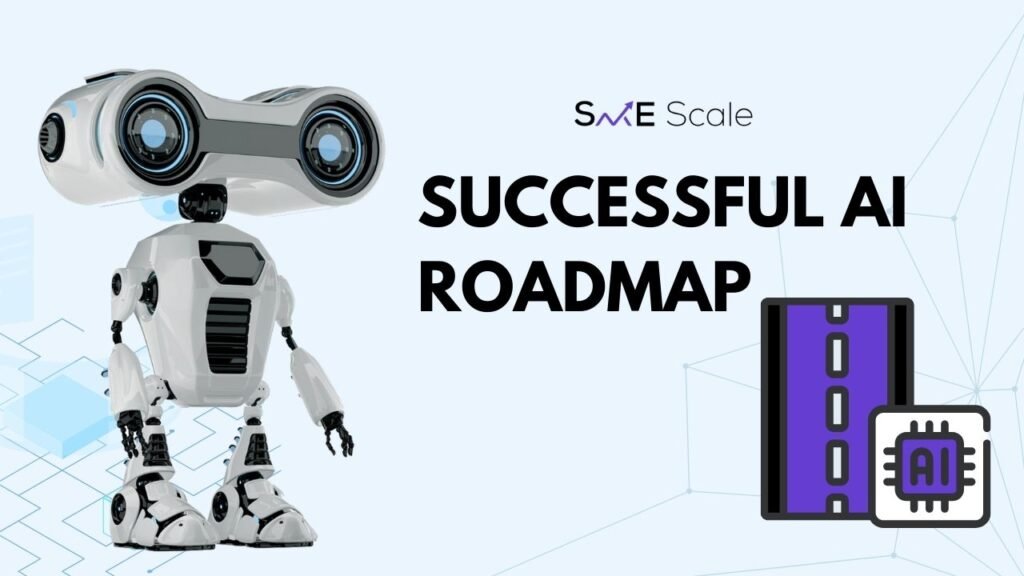
Creating a successful AI roadmap is crucial for any organization aiming to harness the power of artificial intelligence. An AI roadmap outlines the strategic direction, milestones, and resources required to implement AI solutions effectively. Here’s a step-by-step guide to help you craft an impactful AI roadmap.
1. Define Clear Objectives
Start with a clear understanding of what you want to achieve with AI. Whether it’s improving customer service, optimizing operations, or creating new revenue streams, your objectives should be specific, measurable, achievable, relevant, and time-bound (SMART).
Example: Instead of stating “Improve customer service,” aim for “Reduce customer service response time by 50% within 12 months using AI-powered chatbots.”
2. Conduct a Needs Assessment
Evaluate your organization’s current capabilities and identify gaps. This includes assessing your data infrastructure, talent, and technological readiness. A thorough needs assessment helps in understanding what’s required to achieve your AI goals.
Key Questions to Ask:
What data do we have, and what additional data do we need?
Do we have the necessary talent and skills in-house, or do we need to hire or train staff?
What technology stack and tools will be required?
3. Identify High-Impact Use Cases
Focus on use cases that align with your business goals and offer the highest ROI. Prioritize projects that can demonstrate quick wins to build momentum and justify further investment in AI.
Examples of High-Impact Use Cases:
Predictive maintenance for manufacturing equipment
Personalized marketing campaigns
Fraud detection in financial services
4. Develop a Phased Implementation Plan
Break down the AI implementation into manageable phases. Each phase should have clear deliverables, timelines, and success metrics. This phased approach allows for iterative development and quick adjustments based on feedback and results.
Phases to Consider:
Pilot Phase: Test the AI solution on a small scale to validate its effectiveness.
Expansion Phase: Scale the solution across different departments or use cases.
Optimization Phase: Continuously improve the AI system based on real-world performance.
5. Ensure Data Quality and Governance
High-quality data is the foundation of any successful AI project. Establish robust data governance policies to ensure data accuracy, privacy, and security. Implement data cleaning and preprocessing steps to maintain data quality.
Data Governance Best Practices:
Define data ownership and responsibilities.
Implement data privacy measures compliant with regulations like GDPR or CCPA.
Regularly audit data for accuracy and completeness.
6. Build a Skilled AI Team
Assemble a cross-functional team with expertise in data science, machine learning, engineering, and domain-specific knowledge. Invest in training and development to keep the team updated with the latest AI advancements.
Key Roles in an AI Team:
Data Scientists
Machine Learning Engineers
Data Engineers
Domain Experts
AI Project Managers
7. Foster a Culture of Innovation
Encourage experimentation and a fail-fast mentality within your organization. Create an environment where employees feel empowered to explore new ideas and learn from failures. This culture of innovation is essential for sustaining AI initiatives.
Ways to Foster Innovation:
Host hackathons and innovation challenges.
Reward creativity and risk-taking.
Provide continuous learning opportunities.
8. Monitor and Measure Success
Implement a robust monitoring and evaluation framework to track the performance of your AI projects. Use key performance indicators (KPIs) to measure success and identify areas for improvement.
Important KPIs:
Accuracy and precision of AI models
ROI and cost savings
User satisfaction and adoption rates
9. Plan for Scalability
Ensure your AI solutions are scalable to accommodate future growth. This involves designing flexible architectures, using scalable cloud services, and planning for increased data volumes.
Scalability Considerations:
Use modular and reusable code.
Leverage cloud-based AI platforms.
Plan for data storage and processing needs.
10. Stay Agile and Adaptive
The AI landscape is constantly evolving. Stay agile by regularly reviewing and updating your AI roadmap. Be prepared to pivot based on new technological advancements, market trends, and business needs.
Tips for Staying Agile:
Conduct quarterly roadmap reviews.
Stay informed about AI trends and innovations.
Be open to feedback and continuous improvement.
Conclusion
Creating a successful AI roadmap requires strategic planning, cross-functional collaboration, and a commitment to continuous learning and innovation. By following these steps, your organization can effectively leverage AI to achieve its business objectives and maintain a competitive edge.
SME SCALE is your go-to expert for insights and strategies in the AI and data science realm. Follow us for more articles on driving success with cutting-edge technologies.

